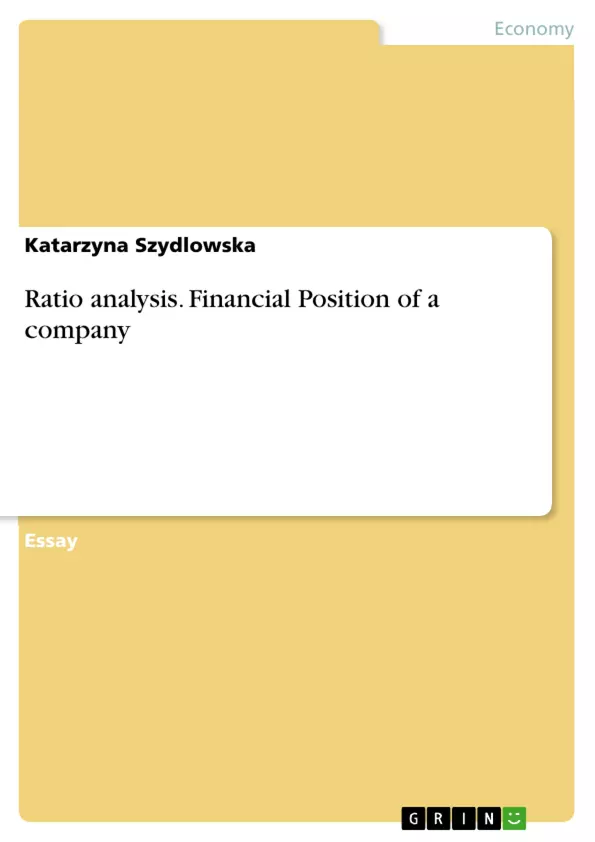The financial ratios are the most common and widespread tools to examine an enterprise’ financial condition. They can be used to compare the performance of the business over the period of time or different firms in different industries. However, the ratios constitute just a raw computation of the financial standing and don’t take into consideration information such as the size of enterprise. The financial ratio analysis allows creditors and investors to understand the financial position of the business and areas, which have to be improved. The ratio analysis allows the industries to determine their strengths and weaknesses. The financial ratios are classified into the five main categories: profitability, liquidity, working capital management, capital structure and stock market performance.
Inhaltsverzeichnis (Table of Contents)
- Executive summary
- Introduction to the company
- Financial ratio analysis
- Profitability ratios
- Liquidity ratios
- Working capital management
- Capital structure ratios
- Stock market performance
- Weaknesses of the ratio analysis
- Conclusion
- References
Zielsetzung und Themenschwerpunkte (Objectives and Key Themes)
This paper aims to analyze the financial position of Burberry, a British luxury brand listed on the London Stock Exchange. The study examines the company's financial performance over a five-year period using ratio analysis. The analysis will highlight the strengths and weaknesses of this approach and draw conclusions based on the findings.
- Financial performance of Burberry over a five-year period
- Application of ratio analysis to assess financial health
- Strengths and limitations of ratio analysis
- Key financial ratios and their implications
- Financial position and strategic implications for Burberry
Zusammenfassung der Kapitel (Chapter Summaries)
- Executive summary: Provides an overview of the paper's objectives, scope, and key findings. It introduces Burberry and outlines the study's methodology, which involves ratio analysis to examine the company's financial performance.
- Introduction to the company: Presents a background on Burberry, highlighting its history, product portfolio, geographic operations, and presence in the stock market.
- Financial ratio analysis: Introduces the concept of financial ratios and explains their importance in evaluating a company's financial condition. This section discusses the five main categories of financial ratios: profitability, liquidity, working capital management, capital structure, and stock market performance.
- Profitability ratios: This chapter explains the key profitability ratios, such as gross margin ratio, net margin ratio, return on assets (ROA), return on capital employed (ROCE), and return on equity (ROE). It presents the calculations and analyses the trends in these ratios for Burberry over the five-year period.
Schlüsselwörter (Keywords)
The main keywords and focus topics of this text include financial ratio analysis, profitability ratios, liquidity ratios, working capital management, capital structure, stock market performance, Burberry, financial performance, financial position, and strategic implications.
- Quote paper
- Katarzyna Szydlowska (Author), 2015, Ratio analysis. Financial Position of a company, Munich, GRIN Verlag, https://www.grin.com/document/421549



